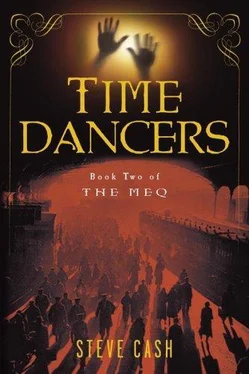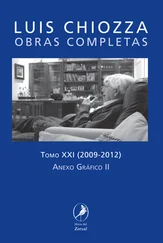Steve Cash - Time Dancers
Здесь есть возможность читать онлайн «Steve Cash - Time Dancers» весь текст электронной книги совершенно бесплатно (целиком полную версию без сокращений). В некоторых случаях можно слушать аудио, скачать через торрент в формате fb2 и присутствует краткое содержание. Год выпуска: 2006, ISBN: 2006, Издательство: Del Rey, Жанр: Фэнтези, Детективная фантастика, ya, на английском языке. Описание произведения, (предисловие) а так же отзывы посетителей доступны на портале библиотеки ЛибКат.
- Название:Time Dancers
- Автор:
- Издательство:Del Rey
- Жанр:
- Год:2006
- ISBN:0345470931
- Рейтинг книги:4 / 5. Голосов: 1
-
Избранное:Добавить в избранное
- Отзывы:
-
Ваша оценка:
- 80
- 1
- 2
- 3
- 4
- 5
Time Dancers: краткое содержание, описание и аннотация
Предлагаем к чтению аннотацию, описание, краткое содержание или предисловие (зависит от того, что написал сам автор книги «Time Dancers»). Если вы не нашли необходимую информацию о книге — напишите в комментариях, мы постараемся отыскать её.
Time Dancers — читать онлайн бесплатно полную книгу (весь текст) целиком
Ниже представлен текст книги, разбитый по страницам. Система сохранения места последней прочитанной страницы, позволяет с удобством читать онлайн бесплатно книгу «Time Dancers», без необходимости каждый раз заново искать на чём Вы остановились. Поставьте закладку, и сможете в любой момент перейти на страницу, на которой закончили чтение.
Интервал:
Закладка:
During that spring in Anchorage, Sailor found and befriended a local taxidermist who had met with Tomizo Hiramura the previous year concerning various methods of mounting large birds of prey, such as hawks and eagles. This was puzzling information, but it was our first lead in months. The taxidermist believed Tomizo had relocated to the interior, possibly to Fairbanks.
After paying too much for a bush pilot and a flight to Fairbanks, our frustrations only began to multiply. Not one person we spoke with had ever heard of Tomizo, and life for two boys traveling alone became more difficult daily. It was much harder to remain anonymous in Fairbanks. We left two months later with nothing but a piece of advice, which Sailor construed to be a good clue—the best place to watch eagles. An old man in Fairbanks had told him to go to Homer where the eagles were “thick as crows.” We reached the little town of Homer at the far end of the Kenai Peninsula in six days, one day after war had been declared in Europe.
It was four o’clock in the afternoon. The sun was already a faded, pale yellow far to the west. Low, broken clouds spread across the sky. Sailor and I walked the length and breadth of Homer in twenty minutes. Sailor said he felt an odd sensation, but didn’t elaborate. At the south end of town, jutting out on a spit of land and rock, was a restaurant and saloon with its own sizable dock and direct access to the sea. As we approached, we detoured down to the water’s edge and made our way toward the dock. Suddenly Sailor stopped in his tracks, holding me back and pointing to a lone figure of a man squatting on the dock, staring up at the forest of pines and boulders in the hills above the restaurant. We followed the man’s gaze with our eyes. “Eagles,” Sailor said, and he was right. I could see at least fifty or sixty bald eagles perched in the tops of trees and maybe twenty more in the air, circling and soaring. We walked the ten paces separating us, stopping just short of the dock. The man had his back to us. He was wearing baggy trousers and a heavy, plaid shirt. His hair was dark and thick.
Sailor said, “Sak?”
The man turned in one motion and stared at both of us without saying a word or showing any expression. Gradually, a trace of a smile crossed his face and he reached inside his pocket, fumbling for something. He found it and extended his arm with a closed fist toward Sailor. Then the man surprised us more than we had surprised him. He turned his hand over and opened his palm, offering Sailor a small cube of salt and uttering the oldest of Meq greetings. “Egibizirik bilatu,” he said. “I am Sak.”
Sailor glanced once at me and turned back to Tomizo Hiramura, saying something I had never heard him say to a Giza. “I am Umla-Meq,” he said, “Egizahar Meq, through the tribe of Berones, protectors of the Stone of Memory.” After that, he introduced me in the same manner.
Sailor then dropped his formal speech, but continued talking. Once again I was amazed by his facility with languages. Speaking to Sak in the same even tone he always used, he spoke for twenty minutes. There was nothing unusual about that, except it was in fluent Ainu, a language I had never heard, nor had many others. I had no idea what Sailor said; however, I heard him mention the Fleur-du-Mal twice. He finished abruptly. He bowed his head once, saying in English, “I thank you for listening to the foolish tale of a foolish traveler.”
Silence followed for a moment with Sak and Sailor staring at each other. Sak was only a few inches taller than Sailor and me. He had a wide, square jaw with a thick beard and thick eyebrows over dark eyes, and looked to be about forty to forty-five years old. He and Sailor stood on the dock nearly eye level with each other. In the late light, the only eagles visible were the few still in the air.
A hint of a smile appeared again on Sak’s face. In a deep and clear voice he said, “What do you wish of me, akor ak ?”
Within twenty-four hours the three of us were in Anchorage and booking passage to Nome. In that short span of time, Sailor had learned that Sak did know of a casi, or mountain castle, purchased around the turn of the century in Japan by his father and sold to a Meq known to the family only as Xanti. The location of the castle was kept secret, even from Sak, but he said his brother, Nozomi, could find out. I wondered how Sak had known the oldest of Meq greetings, “Egibizirik bilatu,” which roughly translated means “the long-living truth, well-searched for.” I learned from Sailor the ancestors of Pello and the ancestors of Sak were part of the same great clan of Giza who were seafarers and travelers during and after the Time of Ice. Using reindeer hides for sails they navigated the world’s oceans and seas for millennia, migrating immense distances, trading knowledge of the sea, sailing techniques and technologies, culture, and most of all—language. Sailor believed the Ainu tongue, at its root, is the only language on the planet similar to Basque. Sak agreed to help us and even lead us to someone he called “the Russian cousin,” who would take us into Japan without being noticed. Sak seemed more perplexed at how we became aware of his existence at all, let alone found him. Sailor didn’t tell him about “Cardinal,” but he did mention Solomon, whom Sak had heard his father and sister speak of many times and always with great respect.
Landing in Nome, we disembarked just as the first winter winds swept in from Siberia. Sak led us to a small hotel in an older part of the historic town. Nome and the small hotel had both seen better days. A devastating fire in 1934, combined with the Great Depression, had taken its toll on Nome.
The storm that followed the winds gave Sailor and me time to get better acquainted with the odd, middle-aged Ainu, Tomizo Hiramura, or Sak as he preferred to be called. Sak had a keen mind and wit. He spoke English well, with only a slight accent, but he had a habit of incorporating slang terms and certain expressions that were purely his. For example, he called everyone “son” in the same way Mitch might use “man” to address someone, and every so often for no apparent reason, he would shout out the phrase “Holy Coyote!” None of this affected his efficiency, however. After the weather cleared, we traveled up the Seward Peninsula to the home of “the Russian cousin.” The man’s face was lined heavily and burned dark from years at sea. His name was Isipo and Sak introduced him as “the last of the Kuril Ainu.” Isipo owned a fishing trawler, which regularly sailed the coasts of Alaska and Russia, fishing mostly for salmon and trading with the native populations, and caring little for international laws and regulations. He could easily get us to the Russian port of Petropavlovsk in Kamchatka. From there, we could make our way through the Kuril Islands and into Hokkaido. Once we were safely in Japan, we could find Sak’s brother in Tokyo. Isipo assured us we could make the run before the weather got too rough. The plan sounded risky, but good, and Sailor and I put our complete trust in the two Ainu men, two of the strangest characters we’d met in years.
It took Isipo a mere four days to prepare the trawler and gather enough false papers and certificates of commerce to cover us if we happened to be stopped or boarded. Isipo set the time of departure for dawn the next day. Sailor and I used the time to shop for new clothes and footwear more suited for life at sea in rough, cold waters. In Nome, finding them in boys’ sizes wasn’t easy.
Sailor thought we should not send word to St. Louis about what we’d learned or where we were going. “What purpose would it serve?” he asked. “Even if Geaxi or Opari or any one of the others were to receive the information, it would be too late.”
Читать дальшеИнтервал:
Закладка:
Похожие книги на «Time Dancers»
Представляем Вашему вниманию похожие книги на «Time Dancers» списком для выбора. Мы отобрали схожую по названию и смыслу литературу в надежде предоставить читателям больше вариантов отыскать новые, интересные, ещё непрочитанные произведения.
Обсуждение, отзывы о книге «Time Dancers» и просто собственные мнения читателей. Оставьте ваши комментарии, напишите, что Вы думаете о произведении, его смысле или главных героях. Укажите что конкретно понравилось, а что нет, и почему Вы так считаете.












